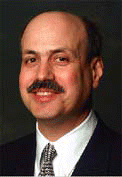Dr. Hessan already has experience with a PC-MH prototype. He receives many referrals from Erickson Retirement Communities’ medical group at its Charlestown campus, and sees patients there one-half day each month. Erickson has an EMR [electronic medical record] and the doctors have 30-minute patient visits. They’re great sounding boards for insight into our patients.
Explore This Issue
March 2008One medical home gray area is who will treat routine otolaryngological diagnoses such as sinusitis. A PCP who now refers sinusitis cases to an otolaryngologist due to time pressure would have more time under the PC-MH to see those patients.
William Reichel, MD, retired department chairman of Baltimore’s Franklin Square Hospital family medicine program, said, I believe primary care is having a hard time now, so the medical home is an appealing answer to the importance of the primary care physician remaining as the central coordinator in patient care. He continued, The medical home will pay for the coordinator role and continuity as patients go from cardiologist to orthopedist to otolaryngologist. Hopefully, the PCP will not be a gatekeeper directing traffic according to rules set down by the payer, but a filter and coordinator of referrals.
Allan Khoury, MD, an internist and Chief Medical Officer of Whole Health Management, which provides onsite corporate health care, sees the medical home’s emphasis on information technology (IT) as critical to success. The baskets of care delivered by doctors aren’t connected. If a patient presents with a sore knee, we should know that he had angioplasty seven years ago and has high cholesterol, for possible links to current symptoms. The PC-MH will reduce medical errors and specialists will benefit because of better documentation and coordination by the personal physician. He added, Also important is that the PC-MH will not put specialists at financial risk.
Show Us the Money
Corporations and major health plans with deep pockets strongly support the medical home concept. Like physicians, they’re rallying around this radical attempt to fix a broken system. A coalition of prominent insurers-Aetna, Blue Cross, Cigna, Humana, MVP Health, United Healthcare, and Wellpoint-and large employers spearheaded by IBM, called the Patient-Centered Primary Care Collaborative (www.PCPCC.net ), is funding demonstration projects and providing consultants to state governments willing to implement PC-MH projects.
Joe Grundy, PCPCC’s press liaison, explained that the group’s significant membership dues fund experts, consultants, working groups, and a PC-MH summit. Additionally, the Portland, ME-based National Academy for State Health Policy is using a $150,000 grant to help teams from 10 states implement Medicaid PC-MHs, also gathering data on common issues and obstacles. The AAFP, with TransforMED, its practice redesign arm, gave $8 million for launching PC-MH demonstration projects, with another $4 million to extend efforts for two years.
Show Us the Demos
Without evidence that the medical home’s higher spending on primary care will save money down the road, the concept may collapse under the weight of good intentions. Nevertheless, the New York-based Commonwealth Fund projects $60 billion cumulative savings in national health expenditures over five years and $193.5 billion over 10 years if Medicare FFS beneficiaries are required to enroll in a medical home. (With voluntary enrollment, five- and 10-year savings would drop to $6.1 billion and $31.7 billion, respectively.) Commonwealth also estimates that enrolling 75% of Medicaid recipients in medical homes would save $16.8 billion in five years.

Leave a Reply